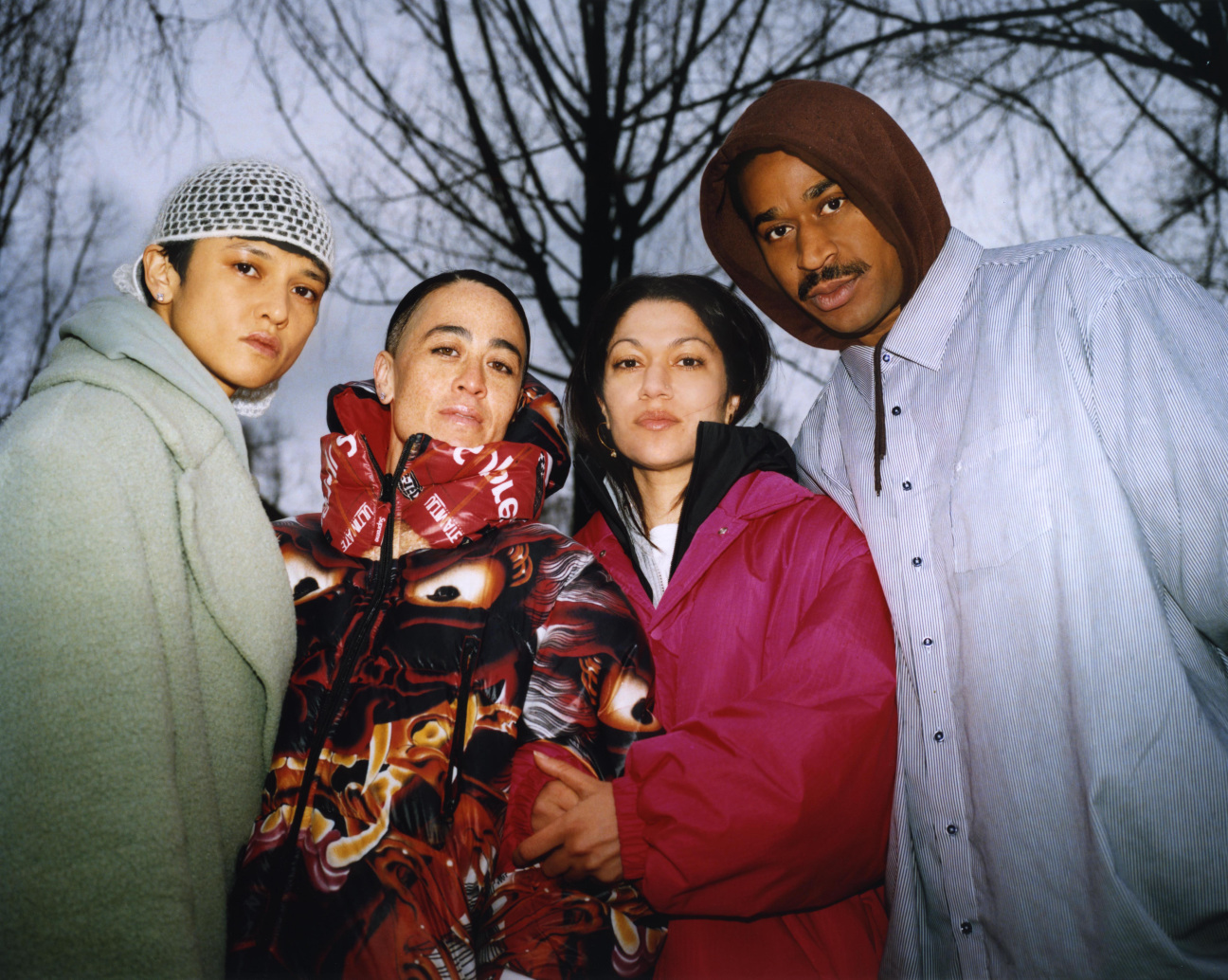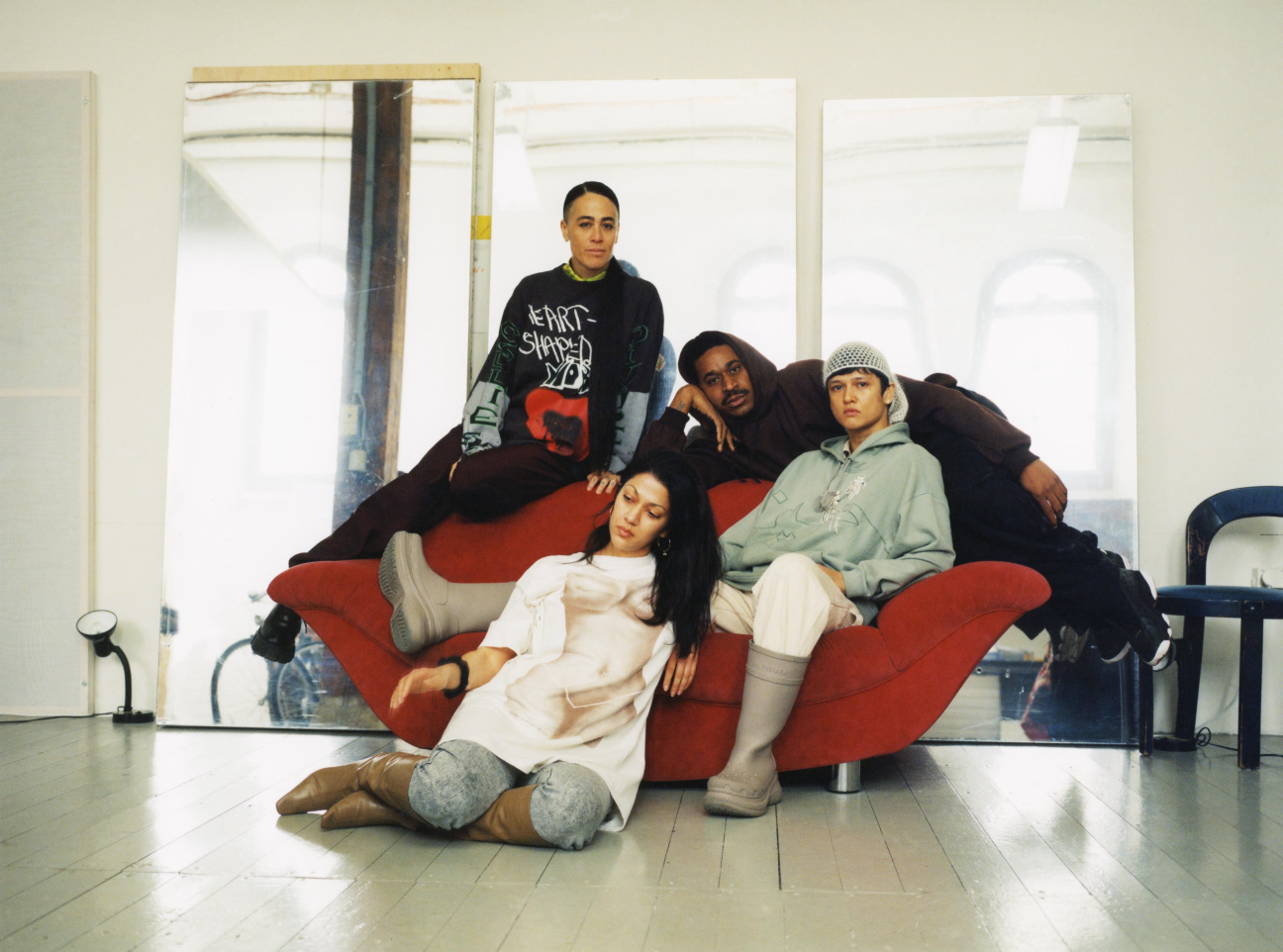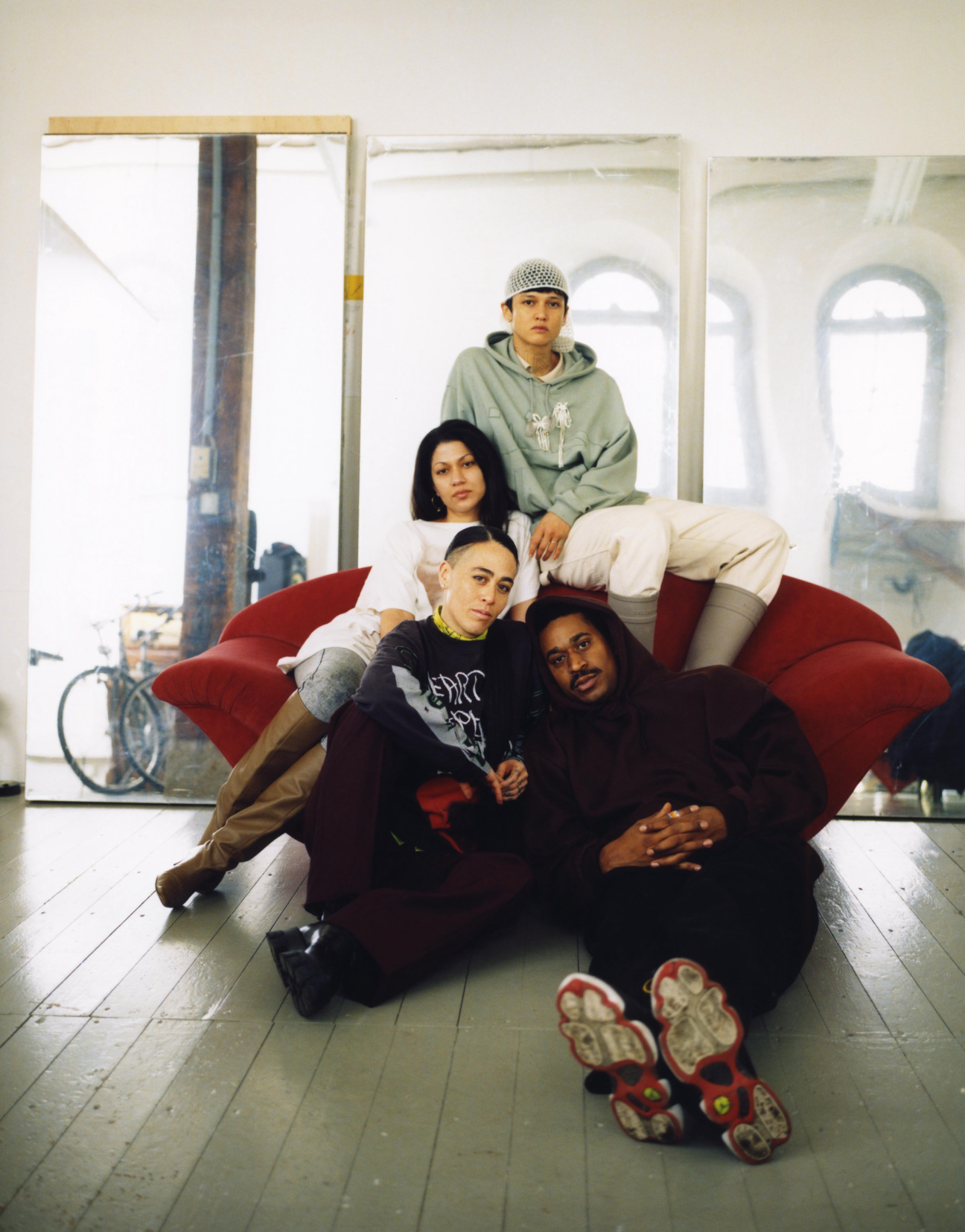
How, in a time of accelerated isolation, can we keep our beloved close? For filmmaker Wu Tsang and performance artist Tosh Basco (formerly known as boychild), the answer was revealed when the pair began playing with translation as an artistic medium. As the story goes, Tsang relayed a story to Basco, which she retold through body movement. This fluid process of call and response eventually led to the formation of Moved by the Motion, a collective of interdisciplinary artists with an ethos of open-source collaboration.
The group was born in 2013 from a “desire to work with loved ones near and far,” says Basco, and to create work that “feels like a layering or unfolding.” For Tsang, the visual artist Charles Atlas and choreographer Merce Cunningham’s legendary artistic partnership offered an invaluable roadmap for forming a collective across continents and disciplines. “The beginning felt like falling in love creatively,” she says. Since then, Moved by the Motion’s members have focused on “sustaining that feeling.”

Dubbed “a band” by scholar, poet, and Moved by the Motion member Fred Moten, the collective swells with interlocutors as needed, counting Tsang, Basco, Moten, dancer Josh Johnson, electronic musician and composer Asma Maroof, and cellist Patrick Belaga as its artist-members. Beyond this constellation is a galaxy of collaborators including artist, writer, and filmmaker Sophia Al Maria, stylist Kyle Luu, and singer Kelsey Lu.
In 2022, Tsang and fellow members presented MOBY DICK; or, The Whale, a silent film adaptation of Herman Melville’s 1851 epic novel. Accompanied by a live score composed by Caroline Shaw, Andrew Yee, and Asma Maroof, a crew of sailors dressed in costumes co-designed by Telfar Clemens embarked on a journey across the high seas, transcending race and gender in pursuit of gelatinous, glowing blubber. The same year, they dove deep into an equally canonical literary work with their play Pinocchio, a fantastical journey that explores the metamorphosis of a log into a “real boy” through poetry, movement, and virtual reality, with both projects written by Sophia Al Maria.
Group work can be emotionally taxing—but for ambitious art-makers, it serves a utilitarian function, too. “Collaboration is essential to the process of making large-scale works,” says Maroof. “It’s never about any singular artist. It takes a village to raise a baby, and that’s what we’re doing here.” For Basco, the process also functions as an act of resistance. “There’s a tendency in the Western world to champion genius and individualism,” she says.
Moved by the Motion is definitively interdisciplinary in its process. The collective disperses each new idea among its members, allowing it to constellate across various planes of expression. For Johnson, this process is an art form in itself: a polyvocality emerges as “the boat sails in the wind of the subject at hand,” he says. “We are the whales beneath it, watching and admiring each other’s understanding of that perspective.”

For Maroof, the experience is akin to watching a sentence be co-authored. Working off a shared prompt—a novel, a beat, a snippet of choreography—allows the artists to enter a state of creative improvisation. “We start off doing a lot of reading. Then WhatsApp groups form along with playlist streams,” Maroof laughs. “Lots of Post-it notes on the wall, some recordings, wiggles, and giggles.”
Moved by the Motion’s commitment to instinct remakes the everyday as a site of possibility and change. “A lot of our creation happens through trying things without overthinking them,” Tsang says. “No matter where we start, we trust that we will end up somewhere entirely different by the end.”










 in your life?
in your life?

